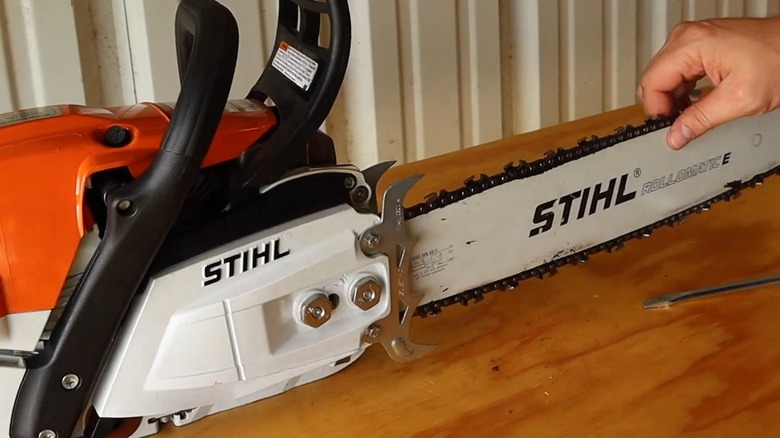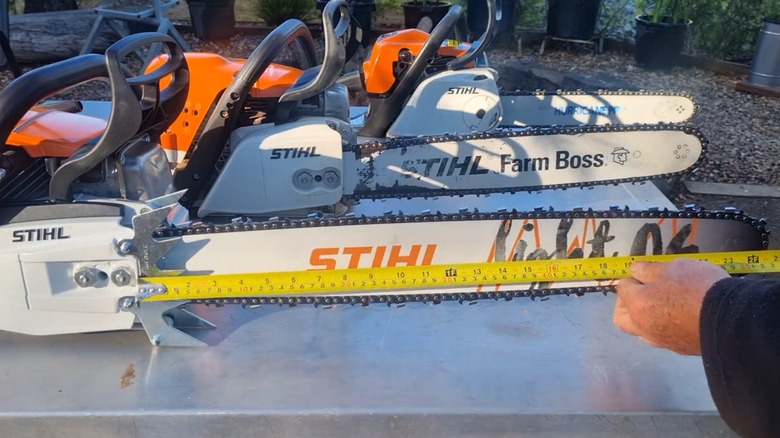Why Do Chainsaws Have Bumper Spikes?
We may receive a commission on purchases made from links.
There are around 36,000 people sent to the emergency room annually as a result of chainsaws, according to the CDC. With risks such as kickback, which pushes the saw back toward the user, any bit of added stability can go a long way. Enter the bumper spike, a piece of metal with pointed ends bolted to the tool and pointing away from the operator. A bumper spike allows you to rest the chainsaw against the wood you're cutting, and adds better control with the metal teeth gripping into the wood.
There are different designs available for bumper spikes, but each offers several advantages. First, depending on the brand, model, and bar length, larger chainsaws can weigh anywhere from 10 pounds to over 21 pounds, in the case of STIHL's mighty MS 881 Magnum. While that might not sound like much, you're continually fighting against gravity when wielding a chainsaw, causing fatigue, which can lead to accidents. Bumper spikes allow you to put the weight on the wood, offering you an opportunity to rest. Although there are smaller, lightweight chainsaws for more convenient use, they don't offer the same level of cutting power as larger models.
In addition to giving your upper body muscles a much-needed break, bumper spikes also stabilize your cutting movements and allow for better leverage when sawing through material. With four or five consecutive spikes, you can effectively pivot as the angle of your cut changes.
Bumper spikes don't come on every chainsaw, but can be added with one disadvantage
Many brands and models offer bumper spikes that re already fitted, but you can potentially add an aftermarket kit if yours didn't. However, you'll need to confirm the bumper spikes you choose are compatible with your saw, as they need to bolt into the body of the tool. For example, something like the PAGOW 2 Pairs MS170 Metal Bumper Spike on Amazon is specifically designed to fit certain STIHL chainsaws. You can also find these products for sale from the manufacturers of the tool themselves, which should list which model is a guaranteed fit.
One thing you'll want to look out for when buying bumper spikes is that more aggressive points that extend further outward effectively reduce your usable cutting area. If, for example, you have a large chainsaw with a 20-inch bar, but equip a set of large 3-inch bumper spikes, you have shortened your cuts to a maximum of 17 inches, which may make some projects more challenging. The solution is to choose the appropriate size bumper spikes you need for the job. Larger, more aggressive spikes come in handy when felling trees with extra thick and jagged bark; however, those with thin and smooth bark would be better served with smaller bumper spikes.

